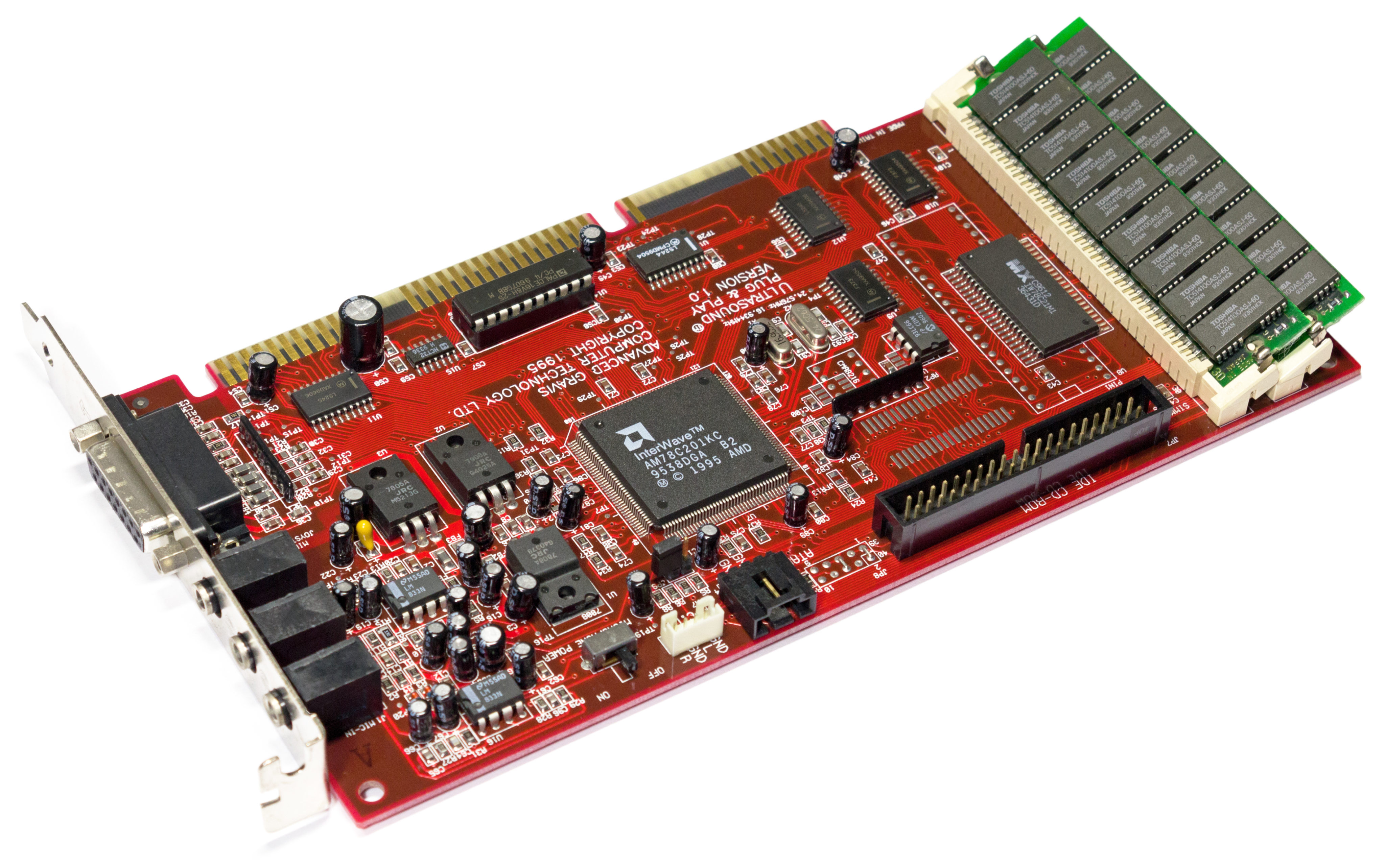First post, by ales
Hi everyone. I recently acquired this beat up GUS PnP and I'm wondering if it can be brought back to life. I've had trouble finding relevant information about the hardware, so I thought I'd ask here for help.
From comparing the card with images online, I see the following (I marked each item in the image):
- Broken latch on SIMM2 socket
Probably not a big deal. I could replace the socket once I get the card working. - Missing capacitor C48
Purely based on size appearance, it could be the same cap as C49 and C51, which are 47 uF, 16V - Missing capacitor C11
Again, maybe it's the same as C10 (10 uF, 25V), but really no idea. - Missing chip 93C66
There seem to be two variants of the card. One with this EEPROM chip, and another with a different (smaller) chip in the overlapping position marked U6.
My card has neither, which I'm assuming is a problem. Or is it? Is this the (optional) MIDI patch-set memory that is only present on the PnP Pro?
If this chip is required, can I flash it after installing it on the card, or would I need to flash it upfront? Where do I obtain the right content for it?
I'd appreciate any ideas or pointers. Is it a stupid idea trying to revive the card, given that someone apparently had a reason to treat it like trash?
Thanks!
